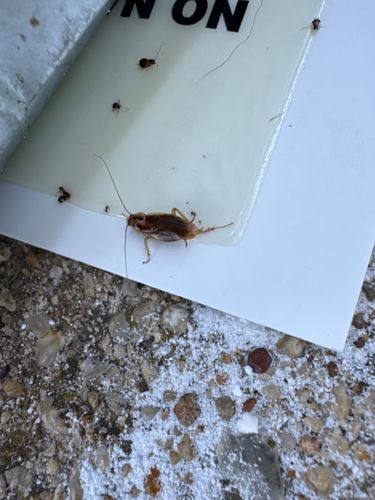German Cockroach
Scientific Name: Blattella germanica
Order & Family: Blattodea, Ectobiidae
Size: 1.1 to 1.6 cm (0.43 to 0.63 in) in length

Natural Habitat
Indoors, preferring warm, humid environments close to food and water sources such as kitchens and bathrooms. They are highly associated with human dwellings.
Diet & Feeding
Omnivorous scavengers, eating almost anything. They are particularly attracted to starches, sweets, greasy foods, and meat products, but will also feed on non-food items like soap, glue, or toothpaste when food is scarce.
Behavior Patterns
Nocturnal and highly reproductive. They are very prolific breeders, producing multiple generations per year. They often hide in cracks and crevices during the day and emerge at night to forage. They are excellent at hiding and can quickly infest an area. Nymphs (young cockroaches) resemble adults but are smaller and wingless. They are easily transported in belongings or packages.
Risks & Benefits
Risks: German cockroaches are significant pests. They can contaminate food and surfaces with bacteria (e.g., Salmonella, E.coli), parasites, and allergens. Their feces and shed skins can trigger asthma and allergic reactions, especially in children. They are also carriers of various human pathogens. Benefits: No known direct benefits to humans, and their ecological role in human-dominated environments is generally considered negative due to their pest status.
Identified on: 9/22/2025